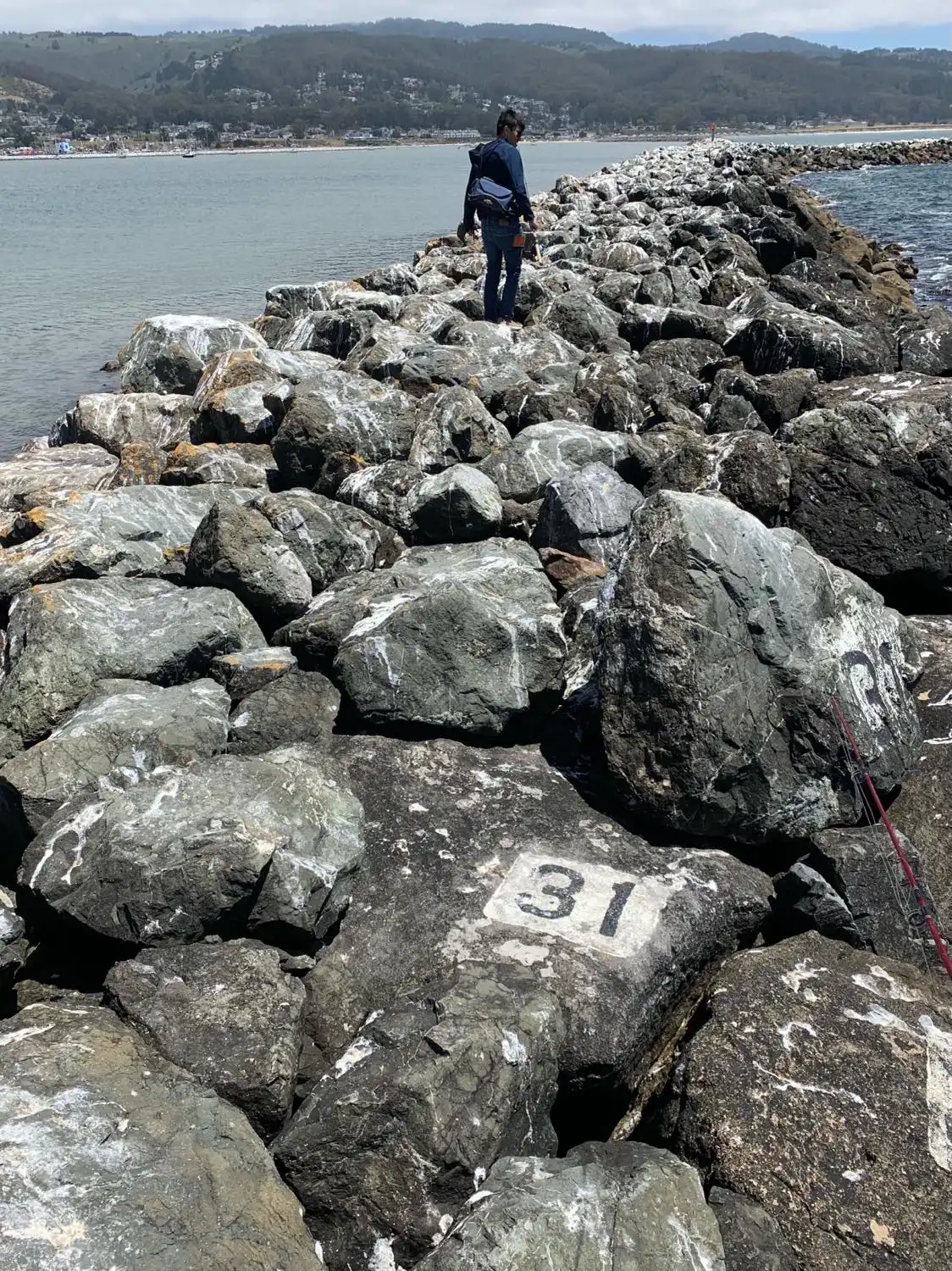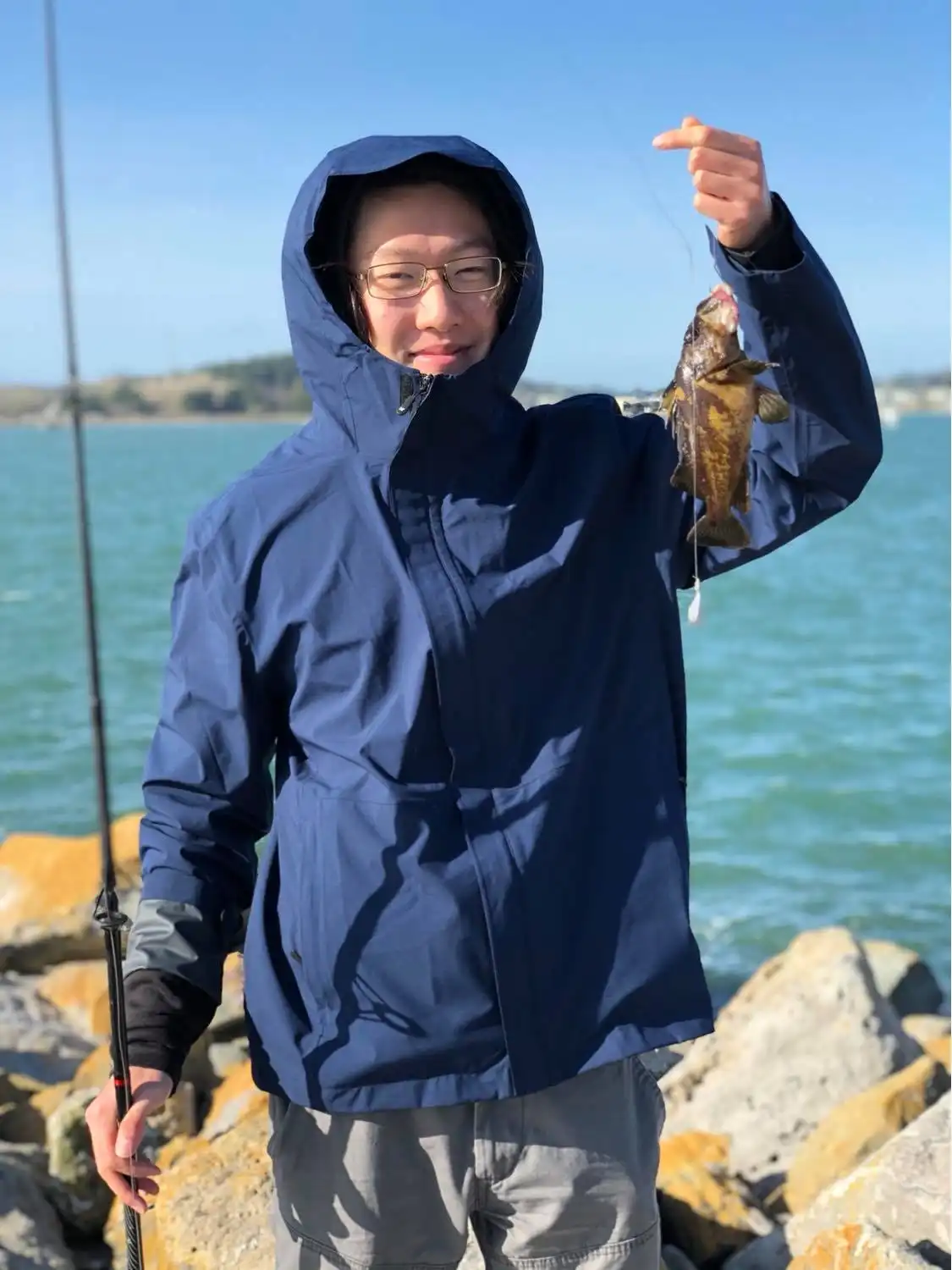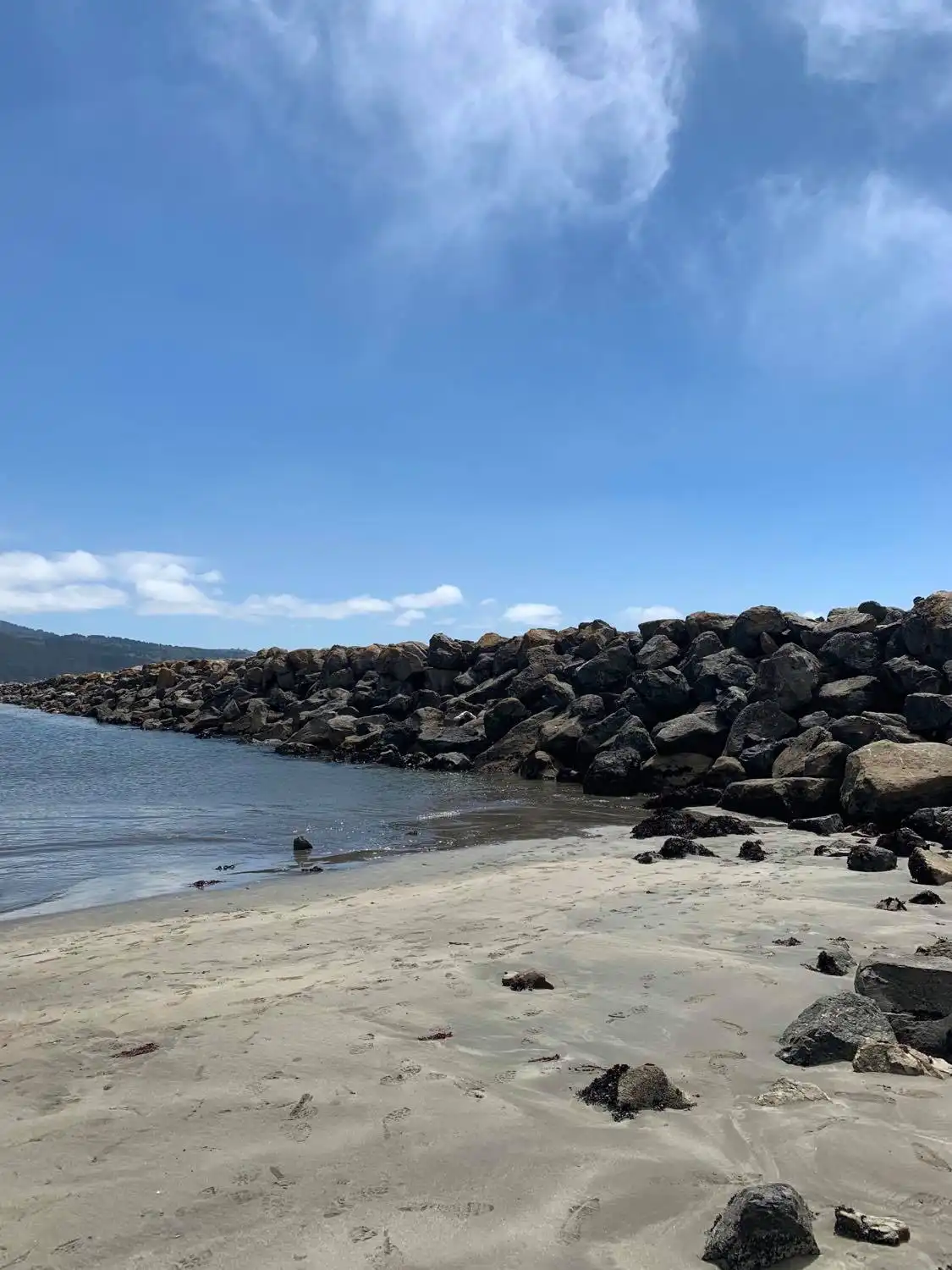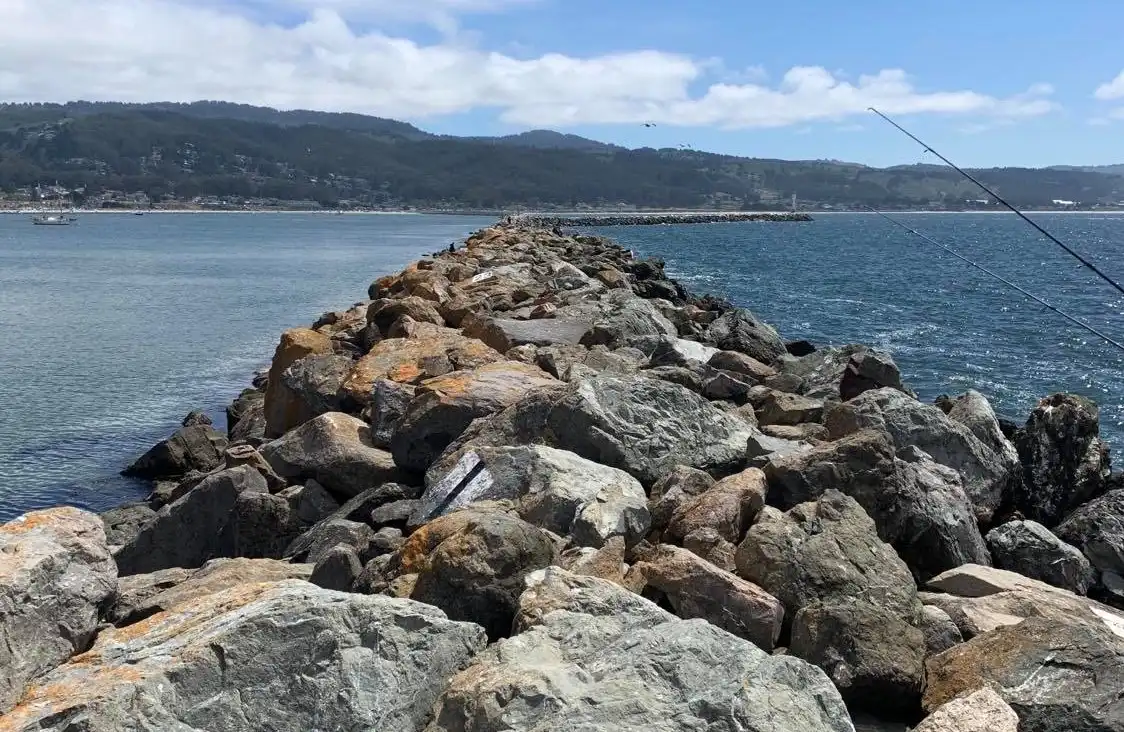Fishing the Half Moon Bay Jetty
Located just a convenient 45 minutes away from the South Bay, there are two main jetties located around Pillar Point Harbor - one on the north end, and one on the south end. I’ve heard the south jetty referred to as “Princeton Jetty”, especially on surf sites if you’d like to check the wave conditions. No fishing license is required to fish off either jetty here. However, the jetty is usually never crowded - it’s large enough, and also treacherous enough, that there’s always ample room between fishermen.
About the Jetties
The north jetty for the most part faces directly to the ocean. As a result, the waves are usually much larger at this jetty compared to the neighboring south jetty. Close to shore, people often snare for rock crab or fish for sandy shore species like surfperch. Not many people go out to the end - the further out you go, the bigger the waves, and there seems to be an exponentially larger amount of bird crap that smells like the seven hells and attracts hordes of flies. However, the water gets much deeper, and as a result rockfish, lingcod, and cabezon start adding to the mix. Some squid on a high-low rig or a swimbait of some kind will do the job. I tend to fish the harbor-facing side of this jetty because it is much less rough than the other side. I usually just drop my bait straight down next to the rocks, which seems to do pretty well - I’ve often caught multiple fish out of the same hole.

On the south jetty, it seems like the vast majority of fishermen are throwing snares for Dungeness Crab. Some squid, chicken, or cut fish in a crab snare will often snag you a tasty treat to take home. There are some crab on the harbor side, but most of the crab seem to be pulled out from the ocean side. Just cast as far as you can, and check your snares every 10 minutes or so. For bait, I’ve seen people catch fresh jacksmelt and use it in their snares, which seems to do really well. There might be other sandy shore fish species as well but I’ve never really seen anybody going for them.
Just like on the north jetty, the farther out you go the deeper the water gets, and you might start catching some rockfish, cabezon, and lingcod. In contrast to the north jetty, I do the best here casting out about 10 to 20 feet, but it can be ridiculously easy to get snagged like this - so bring lots of extra tackle. There are also some huge rock crabs if you get out to the end, but it’s also quite rocky so there’s a decent chance you might snag and lose your snare.

Once in a blue moon people catch salmon off the jetty, but I’ve never been able to snag one myself.
A popular activity here is poke poling around low tide. At low tide, try sticking your bait into the crevices of the jetty. Even though a rock may look entirely out of the water, it may be protecting a hole underneath the rock that contains just enough water for a fish. You can catch nice monkeyface eels and small rockfish with just a strip of squid attached to the end of a stick. Make sure to bring plenty of extra bait, as these fish are expert bait stealers.

Notes
Cover photo from Roy Park
Some of these spots have been hit quite hard in recent years, and as a result fish sizes as well as catch rates have gone down significantly. Do your part for future generations, and only take home the fish you’ll actually use and eat yourself.
Some of the rockfish I’ve caught here are black-and-yellow rockfish, similar to other rocky-shore fishing spots in the rest of the state. If you intend on keeping the fish you catch, keep in mind that this particular species of rockfish are classified as high in methylmercury and PCBs, and you should limit your consumption if possible.
Check out my Bay Area rockfish fishing guide.
Recommended Gear
Crab Snare
Berkley Gulp Sandworms
Berkley Bonefish Ribbed Swimbait
Keitech Swimbait
When fishing the rocks, there is always a surprising amount of current, so you’ll need some heavy weights. I usually use anywhere from half an ounce to four ounces for my rigs. You’ll also snag and break off a lot, so make sure to bring a lot of spares. I’ve listed the weights I use below, in order of preference.
Cloth Bags
Ultra Steel Bullet Weights, 3/4 ounce
Lead Sinkers, 2 ounces
Some of Our Adventures







